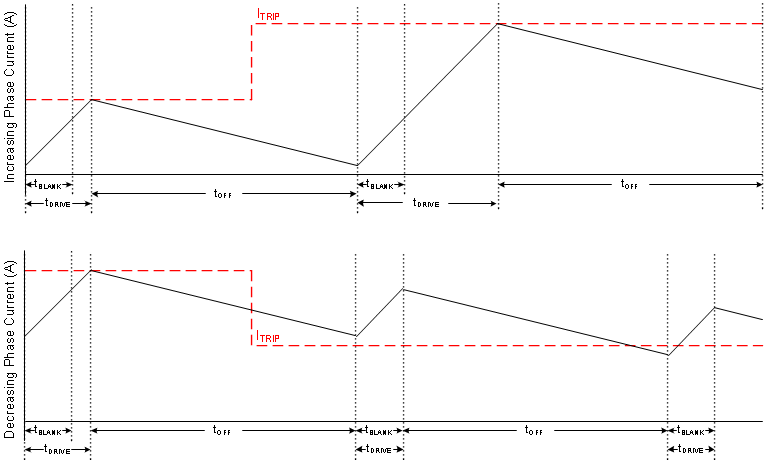SLVSD19A June 2015 – July 2015 DRV8881
PRODUCTION DATA.
- 1 Features
- 2 Applications
- 3 Description
- 4 Revision History
- 5 Pin Configuration and Functions
- 6 Specifications
-
7 Detailed Description
- 7.1 Overview
- 7.2 Functional Block Diagrams
- 7.3
Feature Description
- 7.3.1 Motor Driver Current Ratings
- 7.3.2 PWM Motor Drivers
- 7.3.3 Bridge Control
- 7.3.4 Current Regulation
- 7.3.5 Decay Modes
- 7.3.6 Smart tune
- 7.3.7 Adaptive Blanking Time
- 7.3.8 Parallel Mode
- 7.3.9 Charge Pump
- 7.3.10 LDO Voltage Regulator
- 7.3.11 Logic and Tri-Level Pin Diagrams
- 7.3.12 Protection Circuits
- 7.4 Device Functional Modes
- 8 Application and Implementation
- 9 Power Supply Recommendations
- 10Layout
- 11Device and Documentation Support
- 12Mechanical, Packaging, and Orderable Information
Package Options
Mechanical Data (Package|Pins)
Thermal pad, mechanical data (Package|Pins)
Orderable Information
7.3.5.1 Mode 1: Slow Decay
To configure the DRV8881 into this mode, pull DECAY1 and DECAY0 logic low.
 Figure 16. Slow Decay Mode
Figure 16. Slow Decay Mode During slow decay, both of the low-side FETs of the H-bridge are turned on, allowing the current to be recirculated.
Slow decay exhibits the least current ripple of the decay modes for a given tOFF. However, if the current trip level is decreasing, slow decay will take a long time to settle to the new ITRIP level because the current decreases very slowly.